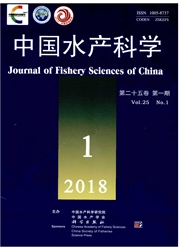

 中文摘要:
中文摘要:
为了研究在吡喹酮代谢过程中,鲫血髓过氧化物酶(myeloperoxidase,MPO)mRNA表达与血药浓度的相关性,以体重为(80±10.5)g的鲫鱼(Carassius auratus)为试验动物,单剂量(10 mg/kg)口灌吡喹酮(praziquantel,PZQ)后,在鲫血液中选取β-actin为内参基因,通过设计特异性引物,利用荧光定量PCR,分析了不同时间点鲫血MPO mRNA水平的相对表达量的变化;利用高效液相色谱法(high performance liquid chromatography,HPLC)测定了吡喹酮在鲫鱼体内的血药浓度,分析两者之间的相关性。结果显示,吡喹酮能够迅速进入血液,并被快速消除,药时数据符合二室开放模型。在1 h时,血液中吡喹酮的浓度达到最大值,为2.85?g/mL,96 h后血液中检测不到吡喹酮;灌药后,MPO基因表达量随时间呈先升后降趋势,在1 h时髓过氧化物酶表达量最高。此外,0.25 h、0.5 h、1 h、3 h与6 h组与对照组差异性极显著(P〈0.01),12 h组与对照组差异显著(P〈0.05)。48 h与96 h组与对照组差异不显著(P〉0.05)。相关性分析发现,MPO mRNA相对表达量与血液中吡喹酮的浓度之间相关系数r=0.96,为高度相关,并且推测MPO可能参与吡喹酮的氧化代谢。结论认为:(1)MPO mRNA相对表达量的升高与外源性药物吡喹酮的摄入有关。(2)血液中吡喹酮的残留量与MPO mRNA相对表达量线性相关。本研究旨在提供一种从分子水平评价水产动物体内药物残留的新思路。
 英文摘要:
英文摘要:
The leukocyte enzyme myeloperoxidase (MPO) is widely present in animals, and is involved in various physiological responses in vivo. When the body is stimulated and the stress reaction is produced, MPO content increases rapidly, showing strong oxidation activity and destruction of invading microorganisms, and enhancing immunity. The strong oxidizing property of MPO has an immense influence on the oxidative metabolism of drugs. Praziquantel (PZQ) is a quinoline pyrazine derivative, and widely used in aquaculture as an anti-parasite drug. In this experiment, PZQ was used as a model drug and crucian carp as a model organism. Analysis of the relationship between MPO mRNA expression and concentration of PZQ in the crucian carp was made after single-dose oral administration of PZQ in an attempt to establish a method for the evaluation of fish in vivo drug residues with MPO genetic. In this study, blood samples were collected at 0.25 h, 0.5 h, 1 h, 3 h, 6 h, 12 h, 24 h, 48h and 96 h after oral administration of 10 mg/kg PZQ, and PZQ concentrations of the samples were simultaneously detected using high-performance liquid chromatography. Pharmacokinetic analysis was performed using the DAS 3.0 program. Pharmacokinetic parameters were based on classical compartmental model analysis. PZQ can be absorbed quickly into the blood and eliminated rapidly. Concentration and time data of PZQ in the blood can best be described by a two-compartmental open pharmacokinetic model; the pharmacokinetics equation was Ct=19.79e^-0.974t+ 1.698e-^0.065t-21.409e^-1.206t. The peak concentration of PZQ was 2.85 μg/mL in the first hour and it was below the detection limit after 96 h. The relative expression of MPO was explored for the first time, using real-time fluorescent quantitative PCR (RT-PCR) with the reference gene of β-actin. The peak value in the relative expression of MPO mRNA also appeared in the first hour. At 0.25, 0.5, 1, 3 and 6 h the relative expression of MPO mRNA showed an extremely significant difference compar
 同期刊论文项目
同期刊论文项目
 同项目期刊论文
同项目期刊论文
 期刊信息
期刊信息
